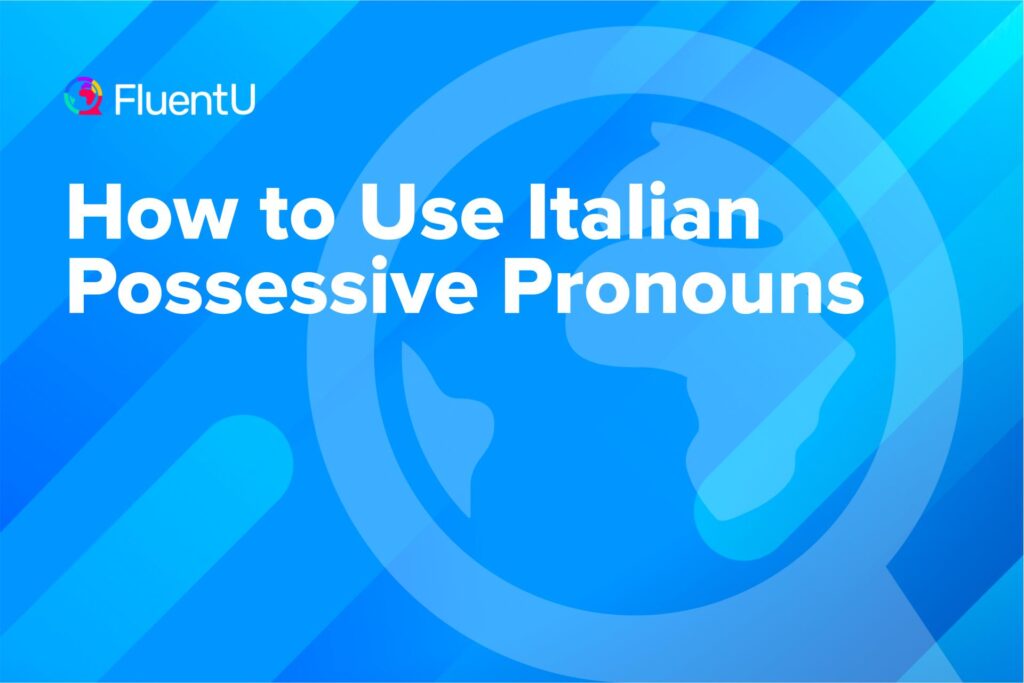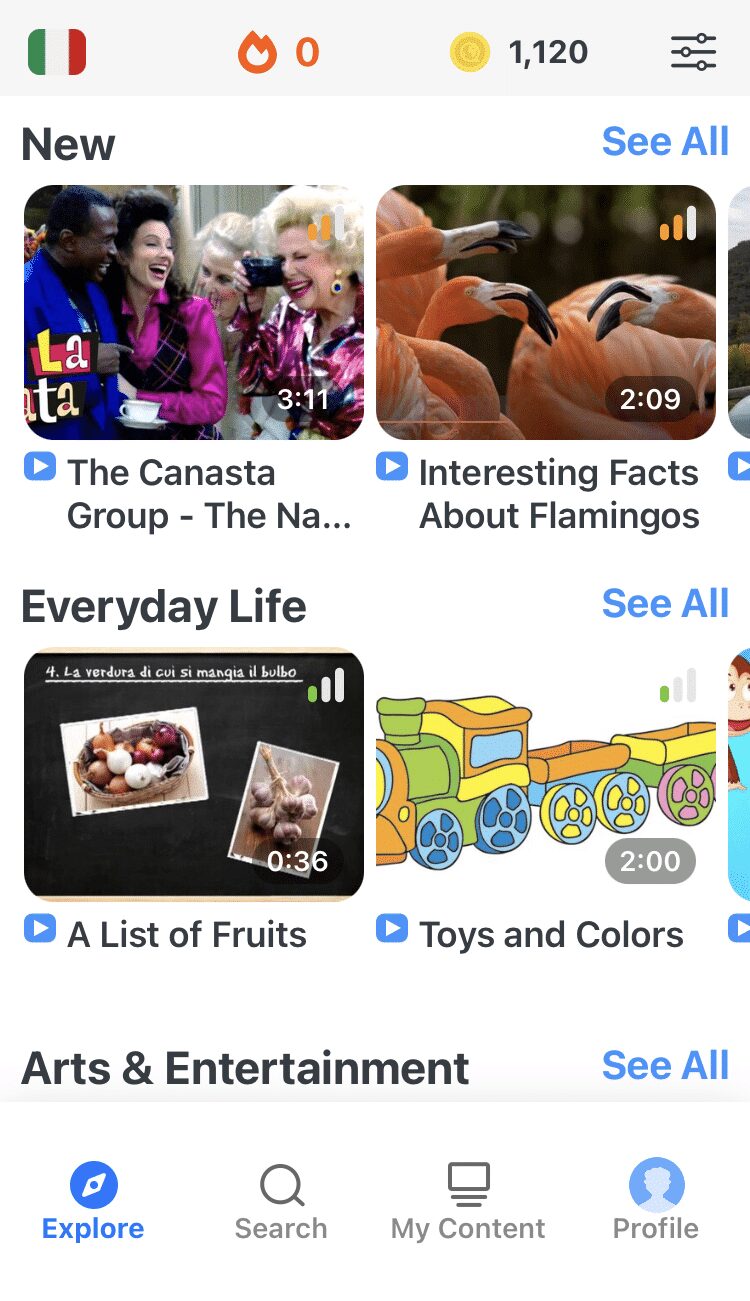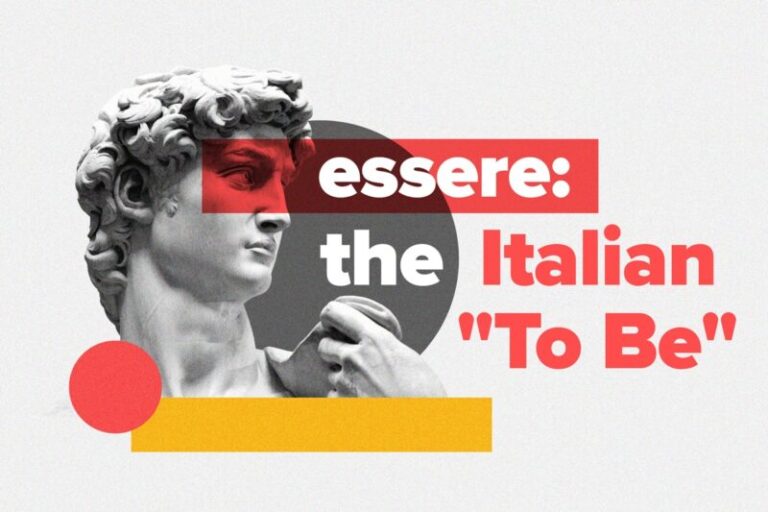How to Use Italian Possessive Pronouns

His and hers, yours and mine—these are all examples of possessive pronouns, and there are only eight of these in English. In Italian, possessive pronouns must agree in gender and number with the noun they’re replacing—so there are 24 of them.
If that sounds like a lot, don’t worry. Keep reading for everything you need to know about how to use Italian possessive pronouns.
Download: This blog post is available as a convenient and portable PDF that you can take anywhere. Click here to get a copy. (Download)
Determine the Gender and Quantity of Italian Possessive Pronouns
| English | Singular (m.) | Singular (f.) | Plural (m.) | Plural (f.) |
|---|---|---|---|---|
| mine | il mio | la mia | i miei | le mie |
| yours | il tuo | la tua | i tuoi | le tue |
| his/hers/yours | il suo | la sua | i suoi | le sue |
| ours | il nostro | la nostra | i nostri | le nostre |
| yours (plural) | il vostro | la vostra | i vostri | le vostre |
| theirs | il loro | la loro | i loro | le loro |
In order to choose the correct possessive pronoun, you must determine the gender and number of the noun or nouns that you want to replace. These include singular feminine, singular masculine, plural feminine or plural masculine.
Singular Feminine
If you want to replace the Italian noun borsa (purse) in the sentence below, you need to use a singular feminine possessive pronoun.
For example:
La borsa non è la mia borsa, è la sua borsa. → Non è la mia, è la sua.
(The purse isn’t my purse, it’s her purse.) → (It isn’t mine, it’s hers.)
The possessive pronouns above are mia and sua because they’re replacing the singular feminine noun borsa.
Singular Masculine
If you’re referring to one libro (book), you’d replace it with:
Non è il mio, è il suo.
(It isn’t mine, it’s hers.)
You use mio and suo because you’re replacing the singular masculine noun libro.
Plural Feminine
If you’re referring to more than one borse (purses) in Italian, you’d say:
Non sono le mie, sono le sue.
(They’re not mine, they’re hers.)
You use mie and sue because you’re replacing the plural feminine noun borse.
Plural Masculine
If you’re referring to more than one libri (books) in Italian, you’d say:
Non sono i miei, sono i suoi.
(They’re not mine, they’re hers.)
You say miei and suoi because you’re replacing the plural masculine noun libri.
Italian Possessive Pronoun and Definite Article Agreement
In Italian, possessive pronouns are preceded by definite articles: i, il, i, la, le, gli, lo, l’.
The article must always agree in gender and quantity with the noun.
Before selecting the correct possessive pronoun and article in Italian, you must ask yourself:
- What’s the gender of the noun or nouns that I’m replacing?
- Is the noun singular or plural?
Using our examples from above, take notice of the definite articles that come before each possessive pronoun:
Non è la mia, è la sua.
(It isn’t mine, it’s hers.)
Non sono i miei, sono i suoi.
(They’re not mine, they’re hers.)
Other Important Notes About Italian Possessive Pronouns
The Three Forms of Yours
Don’t forget that there are three ways to say “you” in Italian.
You use tu for speaking to friends and close family.
You use Lei when speaking to superiors.
You use voi when speaking to more than one person.
If you need to say, “this is my book, that is yours” in Italian, you need to first consider your audience.
If it’s a friend, you can say:
Questo è il mio libro, quello è il tuo.
(This is my book, that is yours.)
You use tuo because the audience is one friend and the book is masculine and singular.
However, if the audience is your boss, you should say:
Questo è il mio libro, quello è il Suo.
(This is my book, that is yours.)
Suo is the possessive pronoun for Lei, and is used in formal situations.
Lastly, if you’re speaking to a group of people about their collective book, you’d say:
Questo è il mio libro, quello è il vostro.
(This is my book, that is yours.)
You use the plural possessive pronoun vostro because you’re speaking to more than one person.
His and Hers: Common Mistakes
Selecting the correct possessive pronoun for “his” and “hers” in Italian can be a bit confusing, especially for native English speakers.
We select the third-person possessive pronoun based on the gender of the owner in English.
In Italian, we select the third-person possessive pronoun based on the gender of the object that’s owned.
For example, if you’re referring to a car owned by a man and you want to say “it’s his” in Italian, you’d say:
È la sua.
You use the singular feminine possessive pronoun, sua because the gender for the word macchina (car), is feminine.
On the other hand, if you’re referring to a book owned by a woman and you want to say “it’s hers” in Italian, you’d say:
È il suo.
You use the singular masculine pronoun, suo because the gender for the word libro (book) is masculine.
Just remember, the gender for the possessive pronoun in Italian doesn’t reflect the gender of the possessor but rather the possession.
Possessive Pronouns Versus Possessive Adjectives
It’s also important to note the difference between possessive pronouns and possessive adjectives.
A possessive pronoun replaces a noun. A possessive adjective modifies a noun.
For example:
È la mia borsa.
(It’s my purse.)
Here, mia is a possessive adjective because it’s modifying the noun purse.
However, in the phrase, “it’s mine,” you remove the noun entirely and replace it with a pronoun.
È la mia.
(It’s mine.)
Here, mia is a possessive pronoun because it replaces the noun borsa (purse).
In Italian, the word may be the same for the possessive pronoun and the possessive adjective, but the contextual use is different.
How to Practice Italian Possessive Pronouns
With 24 possessive pronouns in Italian, practice is a must!
Possessive pronouns require habitual daily use in order for them to become second nature.
Below are some practice methods that will help you make Italian possessive pronouns a natural part of your everyday Italian speech.
Play a Game
To help review the possessive pronouns in the chart above, try this game:
- First, find an old magazine.
- Cut out pictures of different objects. For example: one car, a pile of lemons, a flock of geese, a pillow, a television and a pair of shoes.
- Place the object cut-outs face down in one pile.
- Now cut out pictures of different people. For example: a husband and wife, a man and a group of children.
- Place these cut-outs face down in a second pile.
- One at a time, select a cut-out from each pile and practice forming a phrase with the appropriate possessive pronoun.
So, if you selected a flock of geese and a man, then you’d want to say, “They are his,” in Italian.
The correct answer would be sono le sue. You use the plural feminine possessive pronoun because the word for geese (oche) is feminine in Italian.
The possessor and possession combinations may be absurd, but that’s part of the fun!
You can also try practicing with classmates and adding “you” and “I” into the mix.
Listen to Music
A good old-fashioned love song is often full of possessive pronouns!
Probably because most of the singers are possessed (by love): “He’s mine!” or “My heart is hers!”
An effective way to use music as a language learning and practicing resource is to utilize both the written lyrics and the audio at the same time.
One lovely Italian love song that you can use to practice listening for and identifying possessive pronouns is “Tua per Sempre” by Elisa.
Watch Videos
Besides music videos, you can watch other authentic Italian videos to practice identifying possessive pronouns.
Italian TV shows and movies are great for this kind of practice as you’re bound to come across examples of possessives in action.
For added comprehension, you could also try using an immersive language learning program like FluentU.
FluentU takes authentic videos—like music videos, movie trailers, news and inspiring talks—and turns them into personalized language learning lessons.
You can try FluentU for free for 2 weeks. Check out the website or download the iOS app or Android app.
P.S. Click here to take advantage of our current sale! (Expires at the end of this month.)
Remember, to successfully use Italian possessive pronouns, they must have a definite article and both must agree with the gender and quantity of the noun they’re replacing.
Now all you have to do is practice often, and eventually, you’ll own this Italian topic too!
Download: This blog post is available as a convenient and portable PDF that you can take anywhere. Click here to get a copy. (Download)
And One More Thing...
If you're as busy as most of us, you don't always have time for lengthy language lessons. The solution? FluentU!
Learn Italian with funny commericals, documentary excerpts and web series, as you can see here:

FluentU helps you get comfortable with everyday Italian by combining all the benefits of complete immersion and native-level conversations with interactive subtitles. Tap on any word to instantly see an image, in-context definition, example sentences and other videos in which the word is used.

Access a complete interactive transcript of every video under the Dialogue tab, and review words and phrases with convenient audio clips under Vocab.

Once you've watched a video, you can use FluentU's quizzes to actively practice all the vocabulary in that video. Swipe left or right to see more examples of the word you’re on.

FluentU will even keep track of all the Italian words you’re learning, and give you extra practice with difficult words. Plus, it'll tell you exactly when it's time for review. Now that's a 100% personalized experience!
The best part? You can try FluentU for free with a trial.
Start using the FluentU website on your computer or tablet or, better yet, download the FluentU app from the iTunes or Google Play store. Click here to take advantage of our current sale! (Expires at the end of this month.)








